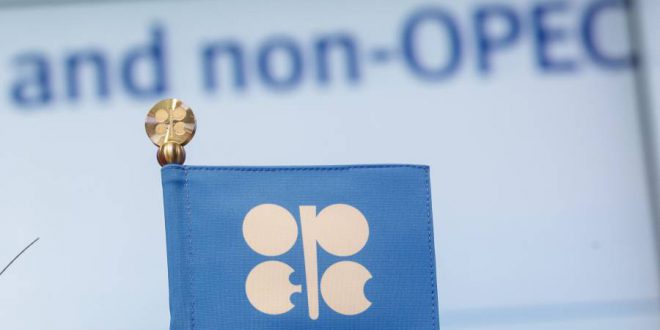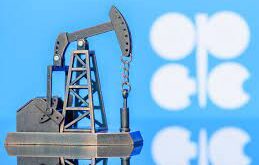The OPEC+ agreement succeeded in at least putting “a floor under prices.“ according to a new report from the International Energy Agency.
The global supply surplus is not resolved. and would likely reemerge if OPEC+ let up on its production cuts. But the agreement was welcomed by the IEA in its December Oil Market Report. where the agency noted that oil prices had been extremely volatile in the few months prior to the meeting in Vienna last week.
“Recently. prices have been volatile. in early October Brent crude oil prices reached $86 bbl on concerns that the market could tighten as Iranian sanctions were implemented.“ the IEA wrote. “Then. thirty-seven days later. they fell back to $58 bbl as producers more than met the challenge of replacing Iranian and other barrels. Such volatility is not in the interests of producers or consumers.“
The agency kept its 2018 demand figures steady. but noted that the trend is negative. “Demand will grow by 1.3 mb d although there are signs that the pace is slackening in some countries as the impact of higher prices lingers.“
The oil market is now dominated by the “Big Three.“ the IEA said. referring to Russia. Saudi Arabia and the United States. Combined those three countries produce 40 percent of global supply. “While the US was not present in Vienna. nobody could ignore its growing influence.“ the IEA wrote.
The U.S. has been rapidly cutting into its own net import dependence on crude. and recently exported more oil and refined products than it imported. For much of this year. the U.S. imported an average of 3.1 mb d. according to the IEA. a figure that is vastly lower than the more than 11 mb d it imported regularly a decade ago. In the last week of November. the U.S. had a net export tally of 211.000 bpd. “As production grows inexorably. so will net imports decline and rising US exports will provide competition in many markets. including to some of the countries meeting in Vienna last week.“ the IEA stated.
Heading into 2019. there is a floor beneath prices with the OPEC+ agreement. but the path to the upside will be a bumpy one. The IEA sees non-OPEC supply growing by more than total global demand next year. which clearly lays out the challenge facing OPEC+. If non-OPEC producers (mainly the U.S.). are set to grow output by 1.5 mb d in 2019. but demand is only set to rise by 1.4 mb d. OPEC+ will strictly comply with the production cuts. perhaps for the full year. in order to head off a growing surplus.
Moreover. the pace of shale growth continues to confound analysts. This year. shale output is expected to exceed initial estimates by some 1 mb d. That doesn’t meant shale producers will continue to over perform. pipeline bottlenecks could slow growth. lower prices could curtail drilling activity. and financial pressure could also take a toll.
Still. it is a reminder that. at a minimum. shale output is hard to predict. New pipelines are expected come online at the end of next year. which will clear the way for more drilling. completions and shipments to refineries and to the Gulf Coast for export.
Other non-OPEC producers probably won’t be as fortunate. Alberta has already put in place mandatory production curbs. The non-OPEC coalition party to the OPEC+ deal have signed on to output limits. Many of the world’s conventional producers are suffering from declines. Brazil is expected to be one of the few non-OPEC countries outside the U.S. that could add supply in 2019. and not by huge amounts. “Thus the US alone is likely to be responsible for the increase in non-OPEC supply. which probably makes the IEA’s forecasted rise of 1.9 million barrels per day too optimistic.“ Commerzbank wrote.
Still. unexpected outages could tighten up the market with little notice. Just days ago. Libya saw roughly 400.000 bpd go offline. much of which came from the country’s massive El Sharara field. because militias were threatening the National Oil Corp.’s operations. Local communities have been protesting the lack of benefits they see from the oil fields. “Regardless of the outcome of this particular dispute. El Sharara will remain particularly vulnerable to disruption.“ Hamish Kinnear. MENA analyst at Verisk Maplecroft. said in a statement. “Whereas most of Libya’s major producing fields are located in the LNA-controlled oil crescent. El Sharara is situated in the remote and contested south west.“
There are also plenty of other variables that inject a ton of uncertainty into the oil market as we head into 2019. “2019 will be no less challenging than last year for the oil market. The global economy is losing momentum. which could have a dampening effect on demand trends.“ Commerzbank said in a new report. “Because the US government is unlikely to extend the granted exemptions from its Iran sanctions in early May. Iranian oil exports will presumably decrease further.“
Trade wars. supply growth. economic uncertainty. sanctions. political upheaval and unexpected outages – the IEA may hope for less volatility. but 2019 does not appear to be shaping up that way.
 Iran Energy News Oil, Gas, Petrochemical and Energy Field Specialized Channel
Iran Energy News Oil, Gas, Petrochemical and Energy Field Specialized Channel




